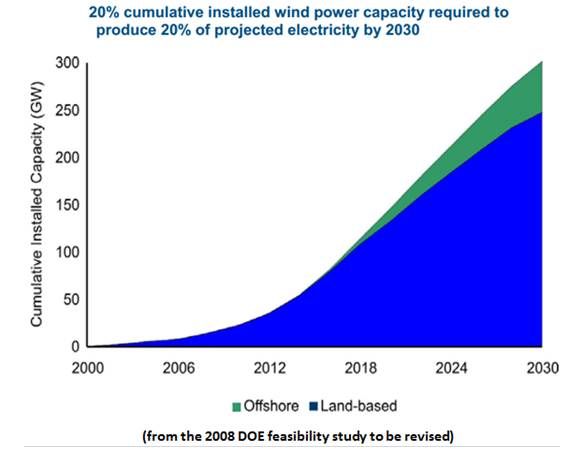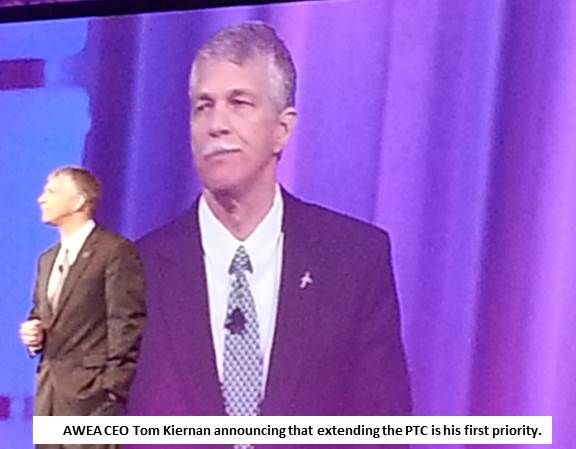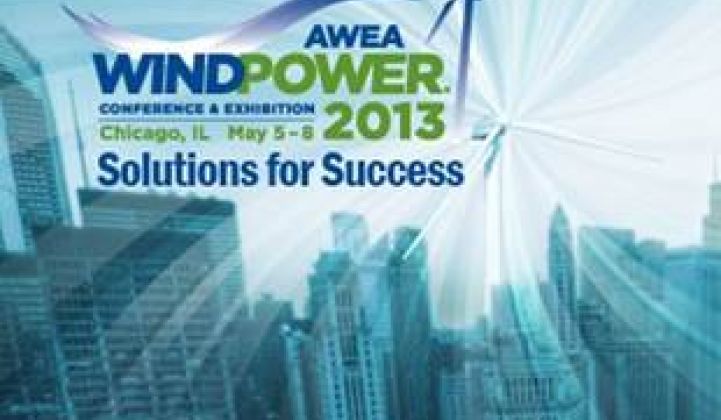The U.S. wind industry is revisiting the policies and goals that made it the U.S. leader in new electricity generating capacity in 2012. The result: two major announcements on the opening day of Windpower 2013, the industry’s annual conclave, which this year is being held in Chicago.
Policies
By raising the possibility last December of a six-year phase-out of its two-decades-old $0.022 federal production tax credit (PTC), wind won its political fight for a one-year extension of the incentive. It also got new language in the law likely to make the credit viable well into 2014. Now the industry is backpedaling.
“Our top priority...is keeping the PTC,” announced new American Wind Energy Association (AWEA) CEO Tom Kiernan in his first public speech to the industry, during the conference morning session. So much for that phase-out.
GTM readers will not be surprised. The idea of the six-year phase-out, AWEA Interim CEO Rob Gramlich said in a recent GTM piece, was just an “analysis” of what going incentive-free by 2018 would look like. In the Chicago conference’s morning press availability session, he repeated that the phase-out analysis was offered only as what the industry might offer “in the context of larger tax reform legislation, and only if the other energy sources were also negotiating about their incentives.”
In the same morning session, EDP Renewables North America CEO and new AWEA Board Chair Gabriel Alonso said wind’s 42 percent share of new U.S. installed power capacity is “just another story we keep writing every day.” The "phenomenal" technological innovation that has almost doubled wind’s average capacity factor in a decade, from 27 percent in 2003 to 44 percent in 2013, he said, has not been matched by the industry’s holding on to its brand.
He also called for wind to take “ownership of its message and get its brand back” by stopping fossil fuels from defining their energy production as “clean.” This is also a new policy shift from the emphasis on jobs and the reluctance to talk about climate change during the recession.

Goals
In the afternoon session, U.S. Department of Energy (DOE) Wind and Water Technologies Director Jose Zayas announced it will update the landmark 2008 DOE study that found it a feasible goal for wind to provide 20 percent of U.S. power by 2030.
Advances in wind technology make it necessary to rethink what wind can do in 2020, 2030, and 2050, Zayas said.
As it did in 2008, DOE will call on environmental groups, utilities, energy experts, and stakeholders to help re-evaluate wind’s technology, its energy markets, and its competition. The intent, Zayas said, is to see how wind can “play a key part in the energy mix of the future” and contribute to DOE’s 2050 target of an 80 percent cut in U.S. greenhouse gas emissions.
National Audubon Society President/CEO David Yarnold and National Wildlife Federation President/CEO Larry Schweiger sat on a panel with Zayas and endorsed the notion of upping wind’s long-term goal. Both noted that climate change is the urgent threat to biological habitat and wind is a part of the solution.
“Wind is the first renewable technology that has become affordable and scalable,” added EDF Renewable Energy Board Vice Chair Jim Walker. “Efficiency and other renewables, especially solar, and a judicious amount of natural gas, to balance the system, are the energy portfolio of the future. And I would be surprised if wind isn't more than 20 percent.”




